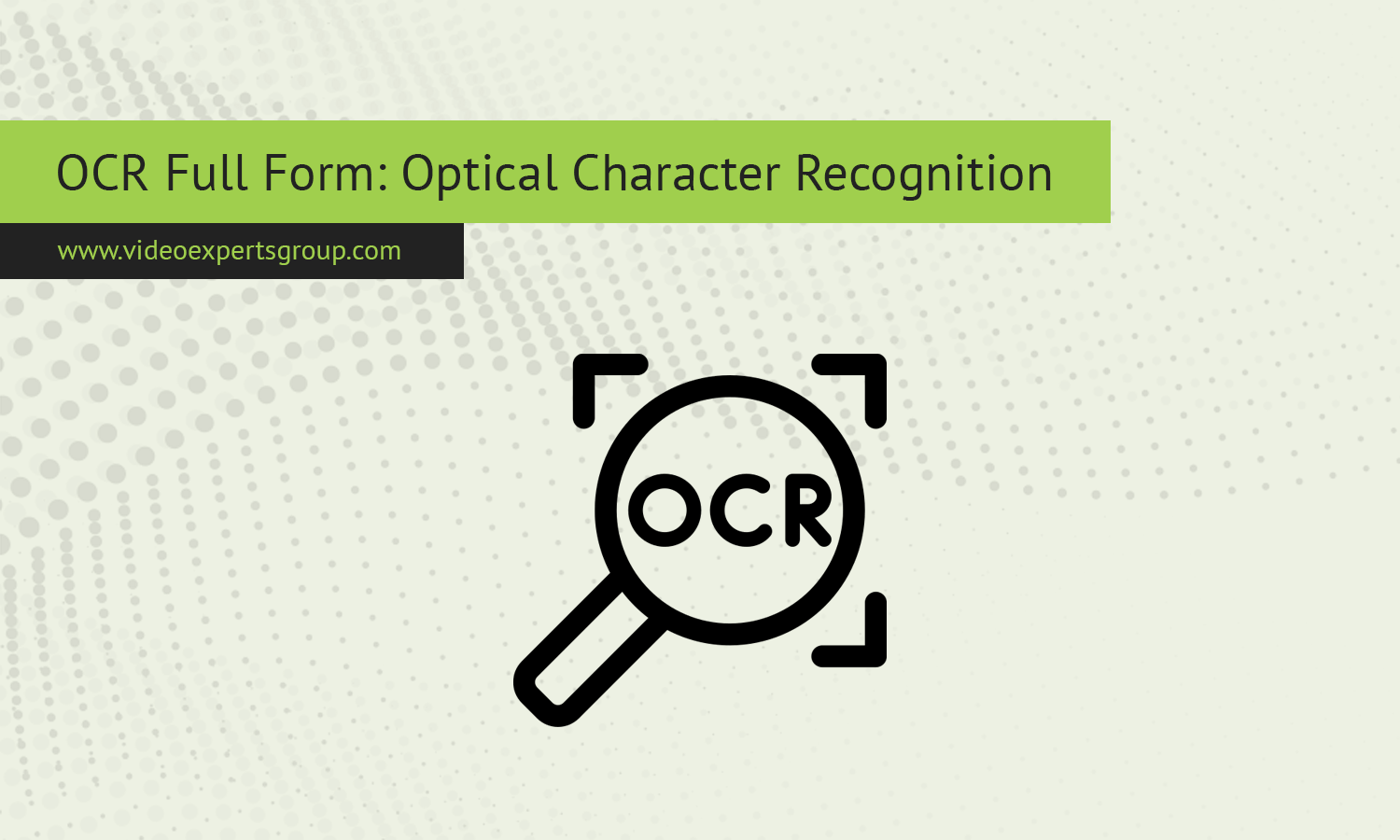Optical Character Recognition (OCR) is a technology that enables machines to recognize and interpret text within images, scanned documents, or even photos. OCR converts printed or handwritten text into machine-readable data, allowing for the digitization of physical documents. This technology is used in various applications, from digitizing books to automating data entry tasks. OCR simplifies extracting information from physical sources and converting them into editable, searchable digital formats.
Definition
OCR stands for Optical Character Recognition. It is a technology that scans images, PDFs, or documents containing text and converts that text into a digital form. Once converted, the text can be edited, copied, or processed by software. OCR identifies individual characters from the scanned document, recognizes them, and translates them into code that machines can understand, typically ASCII or Unicode.
What is OCR Used For?
OCR is used in a wide variety of industries to automate the recognition and processing of text. Here are some common applications:
-
Document Digitization: OCR is frequently used to digitize physical documents, such as books, invoices, and contracts. It converts printed or handwritten material into digital text, making it easier to store, search, and manage documents.
-
Data Entry Automation: Organizations that deal with large volumes of forms, receipts, or invoices often use OCR to automate data entry. Instead of manually typing in data, OCR extracts it directly from the document, reducing human error and saving time.
-
Archiving Historical Documents: Libraries, museums, and researchers use OCR to preserve and digitize historical manuscripts, making them accessible and searchable online.
-
License Plate Recognition: OCR is used in traffic systems and surveillance to automatically read vehicle license plates. This is useful for toll booths, parking management, and law enforcement.
-
Assistive Technology: For people with visual impairments, OCR is integrated into tools that convert printed text into speech or Braille, making written content more accessible.
-
Text Translation: OCR can capture text from images and feed it into translation software, enabling quick translation of signs, menus, or any written content in foreign languages.
How Does OCR Work?
OCR operates through several stages to convert text from images or scanned documents into machine-readable text:
-
Image Acquisition: The first step is capturing the image that contains the text. This could be done through a scanner, camera, or by importing a digital image file. The quality of the image affects OCR accuracy, so high-resolution images with clear text yield better results.
-
Preprocessing: Before OCR software can recognize text, the image goes through a series of preprocessing steps. These steps may include:
- Binarization: Converting the image to a black-and-white format to distinguish text from the background.
- Noise Removal: Eliminating any distortions or unwanted marks that could interfere with text recognition.
- Skew Correction: Adjusting the image if the text is slanted or not properly aligned.
-
Text Recognition: OCR identifies characters by analyzing patterns and shapes. There are two main approaches:
- Pattern Recognition: The software compares characters in the image with stored templates of letters and numbers.
- Feature Extraction: Instead of matching templates, feature extraction breaks down characters into individual components like lines, curves, and angles, allowing for more flexible recognition, especially for different fonts or handwriting.
-
Post-Processing: Once the text is identified, OCR software may use dictionaries or language models to correct errors and ensure accurate text output. This step can involve checking for context and grammar, ensuring that recognized words make sense.
-
Output: Finally, the recognized text is output in a digital format. This can be a simple text file, a searchable PDF, or a Word document, depending on the user's needs.
OCR Examples
Here are a few practical examples of OCR in action:
-
Google Drive: Google Drive has integrated OCR functionality that allows users to upload images or PDFs containing text, which are then converted into searchable and editable documents.
-
Banking and Financial Services: Banks use OCR to process checks, extracting information like account numbers, names, and amounts from scanned or photographed checks, speeding up processing times.
-
Postal Services: OCR is used to automatically read addresses from letters and packages, reducing the need for manual sorting and improving efficiency.
-
Healthcare: In hospitals, OCR is used to digitize patient records, converting paper-based medical records into electronic health records (EHRs) that are easier to store, search, and share.
-
Mobile Scanning Apps: Apps like Adobe Scan and Microsoft Lens use OCR to convert photos of documents, whiteboards, or receipts into editable text that can be saved, shared, or exported.
FAQ
Optical Character Recognition (OCR) is a transformative technology that enables the conversion of physical text into machine-readable data. It has widespread applications in various industries, enhancing efficiency, accessibility, and data management. With the continued advancement of OCR technologies, its accuracy and range of applications are expanding, making it an invaluable tool for businesses and individuals alike.
















